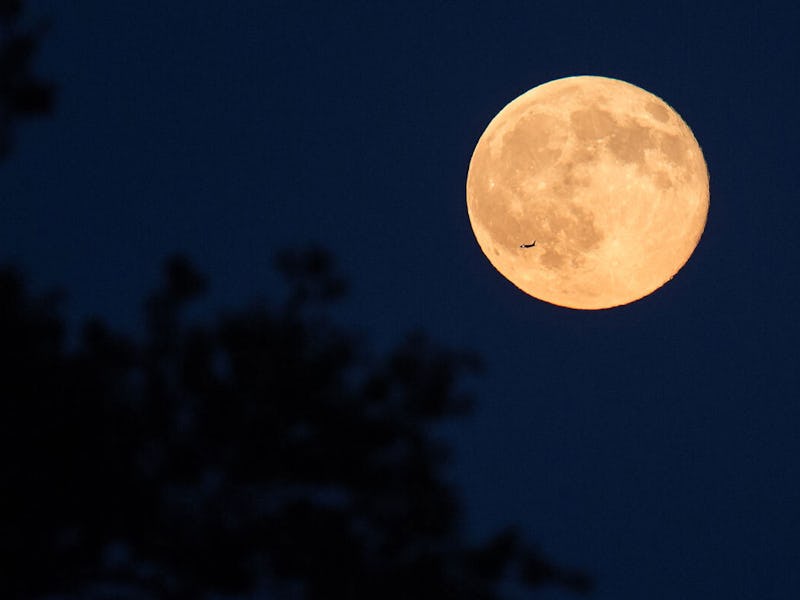You need to see the Harvest Moon in the night sky Thursday
This week's Full Moon will shine at its brightest to mark the beginning of autumn.

Celestial objects come and go from the night sky. Whether it be the Full Moon, a meteor shower, or just the best night to see Mars, we're here to direct your eyes skyward and tell you to look up and appreciate the wonders of space from Earth.
This week, we're asking you to marvel at the Full Moon as it appears opposite of the Sun, shinning at its brightest in the night sky.
The Moon will reach its peak fullness on Thursday, October 1, at 5:05 p.m. Eastern, and will appear full for the following three days around the same time, from Wednesday morning to Saturday morning, according to NASA.
Over the course of its trip around Earth, which takes approximately 27 days, the Moon embarks on eight different phases.
This illustration shows the different phases of the Moon, varying in visibility and brightness.
At the beginning of its cycle, the Moon is on the same side of the Earth as the Sun, with its dark side facing our planet. As a result, it is almost invisible to us. Then, a small sliver of the Moon’s crescent gradually appears in our skies as it waxes to become a Full Moon at the peak of its cycle. After that, it begins to wane into invisibility once more, before beginning anew, 29 and a half days after the preceding New Moon.
Each of these phases is marked by changes in the Moon's visibility, brightness and how it appears in size.
A Full Moon takes place once every 27 days, when the Earth is wedged between the Sun and the Moon at exactly opposite ends. As a result, the side of the Moon facing the Earth becomes fully illuminated by the Sun’s beaming light.
When the Full Moon falls closest to autumn, marking the end of summer and the beginning of fall, it is referred to as a Harvest Moon. Native Americans called it the Harvest Moon because it lit the night sky during corn harvest season, making it possible for farmers to work longer hours under its light.
The Full Moon typically rises around 50 minutes later each night. But when it falls during the autumn season, the Moon rises at nearly the same time, only about 10 to 20 minutes later than the night before in northern Canada and Europe, and 25 to 30 minutes later in the northern United States, according to NASA.
October is a special month for Full Moons, with two occurring within the same month. The next Full Moon will fall on October 31, the night of Halloween. It is known as the Blue Moon or the second Full Moon in the same month.